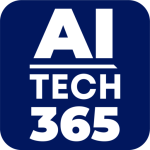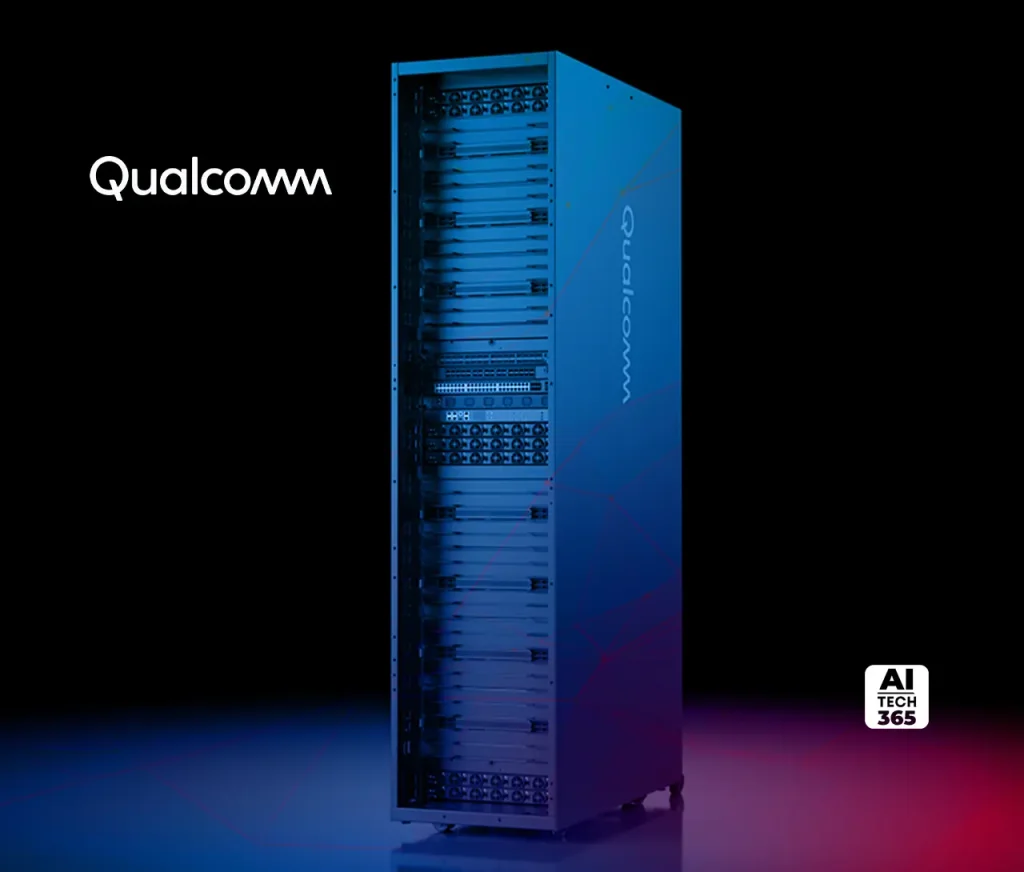Qualcomm has this week announced its future-generation data-centre oriented AI infrastructure: the AI200 and AI250 rack-scale inference solutions. The company claims that these systems will provide “rack-scale performance and better memory capacity for efficient data centre generative AI inference.”
Key points are:
- AI200 is scheduled to come out commercially in 2026; the AI250 hits the market in 2027.
- The AI200 has support for 768 GB of LPDDR memory per card and features direct liquid cooling, PCIe for scale-up and Ethernet for scale-out.
- The AI250 has a “near-memory computing” architecture that Qualcomm states will provide over 10× effective memory bandwidth and considerably reduced power consumption.
- Both racks support up to approximately 160 kW of power per rack level.
- These solutions are positioned not for training large models, but for inference the phase when already-trained models are deployed to generate predictions or responses.
- Qualcomm emphasises a full-stack offering: hardware plus a software ecosystem enabling major AI frameworks, pre-trained model deployment, and disaggregated serving.
According to a company spokesman, “With Qualcomm AI200 and AI250, we’re redefining what’s possible for rack-scale AI inference.”
Also Read: LambdaTest Unveils AI-Powered Web Scanner for Scalable Visual and Accessibility Testing
Implications for the Data-Centre Infrastructure Industry
This release has several knock-on implications for players in data centre infrastructure (DCI) ranging from colocation and hyperscale providers to hardware integrators and facilities providers. Some of the major areas of influence include:
-
Compute footprint and rack-design change
The AI200/AI250 racks are specifically designed for inference workloads: high memory per card, liquid-cooling, high-density rack power (≈160 kW). The infrastructure operators will have to determine if current facilities (power supply, cooling, floor space, rack density) can be utilized for this density and cooling capacity. Upgrades to liquid-cooling systems, improved power/cooling distribution, and facility relayout will require CAPEX.
-
Total cost of ownership (TCO) & efficiency focus
Qualcomm prioritises “high performance per dollar per watt” and reduced TCO. For DCI providers, inference workload is expanding robustly (led by generative AI, large language models, multimodal models). More efficient racks translate to improved economics: reduced power & cooling expenditures, improved space usage, and reduced time to value. Infrastructure vendors and data-centre operators will accordingly modify their procurement economics and ROI models.
-
Competitive landscape & vendor diversification
In the inference hardware space, industry leaders like Nvidia and AMD have had robust positions. Qualcomm’s entry increases the ecosystem and can exert price pressure, diversify supply and accelerate innovation. For buyers of infrastructure, this translates to greater choice but also greater complexity in software stack integration, hardware compatibility, service contracts and lifecycle management.
-
Cooling and facility engineering up-shift
Racks that use 160 kW and liquid cooling create more challenging specifications for data-centre design companies, MEP engineers. Retrofits of current halls or new pods optimized for high-density racks, high-end cooling (liquid, two-phase, immersion), power corridors and backup may be the result for colo-providers or hyperscalers. Increased demand is anticipated for infrastructure suppliers (chillers, distribution, plumbing, monitoring).
-
Software-stack and systems integration
Qualcomm stresses that its product includes an ecosystem: support for frameworks like PyTorch, ONNX, LangChain, CrewAI and inference deployment libraries Infrastructure providers will be required to make their operational models (e.g., colocation + service, cloud-managed AI inference) conform to those stacks. Hardware is only half the story: integration, orchestration, cooling/thermal monitoring, power optimisation, and deployment tools become differentiators.
-
Market timing & growth acceleration for inference-centric infrastructure
The transition from train-only to inference-at-scale is picking up speed. As companies implement generative AI models for real-time applications (chatbots, multimodal assistants, real-time decisioning), infrastructure requirements transform: more memory-focused, high-throughput, lower-latency racks as opposed to strictly dense GPU train-only farms. Qualcomm’s timing can potentially drive the build-out of such inference‐optimized data-centres ahead of schedule, potentially benefiting early adopters.
Business Effects for Infrastructure Operators & Service Providers
- Hyperscale/cloud providers: For cloud service providers building their own data centers, the emergence of new inference-optimized racks means they need to update hardware refresh cycles and infrastructure roadmaps. Older GPU-focused racks will be less efficient for inference workloads; operators will isolate training clusters vs inference clusters, and design infrastructure specifically to that (e.g., higher-density inference pods with specialized cooling and memory architecture).
- Colocation/neutral-data-centre operators: Such companies can position themselves to ride the inference-economy wave. Upgrading facilities to accommodate 150 kW+ racks and liquid cooling, they can acquire AI‐heavy workloads and command premium rents for high-density pods. They need to consider CAPEX vs premium yields and develop multi-tenant cooling/power corridors in line with the same.
- Hardware integrators and OEMs: There’s potential to create rack systems around Qualcomm’s AI200/AI250 ecosystems with the cards, networking, power/cooling, and management stack integrated. Ecosystem vendors and Qualcomm partnerships will be essential. Integrators can potentially need to acquire knowledge in inference optimisation, memory bandwidth management, and disaggregated serving architectures.
- Infrastructure providers & managed-AI vendors: Businesses providing managed inference services (e.g., inference as a service, model hosting) will benefit from hardware more specifically tailored for their workloads. Lower TCO and increased efficiency = quicker margins, improved offering to customers. Concurrently the operational complexity of deploying high-density racks can make partnerships necessary for facility readiness, thermal/power monitoring, and service contracts.
- Facility engineering & operations: Legacy data-centre infrastructure teams need upskilling. Liquid cooling to support racks that use 160 kW, high memory load, and high throughput networking means increased thermal design, power monitoring, redundancy, and maybe site upgrades (power transformers, cooling capacity, floor loading, fire suppression). Operating risk (e.g., thermal runaway, liquid coolant leaks) is higher, so O&M procedures need to change.
Conclusion
Qualcomm‘s move to announce AI200 and AI250 systems marks a significant turning point in the data-centre infrastructure paradigm: it emphasizes that inference workloads are now first‐class citizens, and hardware, facilities and services need to adapt accordingly. For the data-centre infrastructure sector, this implies rethinking design models (power/cooling), refresh strategies (hardware lifecycle), service offerings (inference-optimised pods), and vendor ecosystems (new entrants and partnerships).
For companies doing business here from hyperscalers to colos, from hardware integrators to service providers the word is out: the inference-focused AI infrastructure wave is coming, and being early/prior will bring competitive benefit. Enhancing facilities for high density, memory-focused racks, prepping for new hardware ecosystems, and optimizing service delivery will define who wins the future generation of AI infrastructure.

